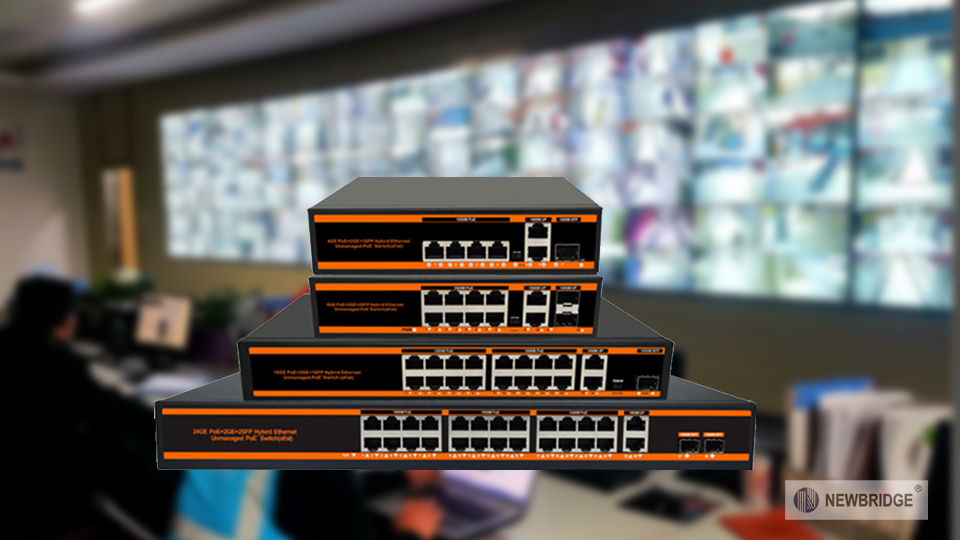Three big pitfalls I have stepped into in the five years since I entered the industry
I remember the year I first entered the industry, in a smart monitoring project, I chose a low-priced switch that was labeled "supporting PoE". As a result, the camera frequently dropped offline as soon as the device was powered on. After three days of troubleshooting, I found out that this switch did not support the 802.3at standard at all, and the customer's camera was a PoE + device. That rework not only lost labor, but also almost lost the customer's trust. Later I realized that the PoE standard is not a decoration, and choosing the wrong one is equivalent to working in vain.
Another time in a factory project, I ignored the power budget. After all 24 ports were fully plugged in, the switch directly triggered the overload protection, and the production line monitoring was instantly paralyzed. When adjusting the equipment overnight, the supplier's words "You didn't calculate the line loss" made me feel ashamed. Since then, I have developed the habit of leaving 30% redundancy in power calculations, and I have never had similar problems again.
The most unforgettable thing was a wireless coverage project for a shopping mall. The customer required zero lag for all APs. I chose a switch with beautiful parameters, but the AP frequently disconnected. In the end, I found that the heat dissipation design was a hindrance - although the metal shell is beautiful, the temperature soars under high load, causing the chip to reduce frequency. After that, I began to study the applicable scenarios of different heat dissipation solutions and never dared to just look at the parameters again.

Five golden formulas for choosing the right PoE switch
1. Number of ports = number of devices × 1.5 + redundancy
This is not metaphysics, but practical experience. For example, for a surveillance system with 8 cameras, at least a 12-port switch should be selected. The extra ports can not only cope with future expansion, but also be temporarily replaced when a port fails. I once reserved 4 ports in a smart hotel project, which came in handy when installing smart door locks later.
2. Power budget = Σ (device power consumption × 1.2) + line loss
Take a warehouse monitoring as an example: 16 cameras, each with 12W, with a total power consumption of 192W. According to the formula, 192×1.2=230.4W is required, plus 10% line loss, and finally a 250W Newbridge switch was selected. In actual operation, even if temporary fill lights are connected at the same time, the system is still stable.
3. Power supply standard = equipment requirements × scene coefficient
802.3af is sufficient for ordinary IP phones, but PTZ cameras with zoom must use 802.3at. In a scenic spot project, I selected a PoE switch that supports 802.3bt for the 4K camera on the high-altitude observation deck. The single-port 60W power supply ensures that there is no power outage during 360-degree rotation.
4. Management function = scene complexity ÷ operation and maintenance cost
A small office can choose a non-network-managed switch, but a large campus must use a managed type. I remember that in a smart classroom project in a certain university, the LLDP protocol was used to automatically discover devices, and the port mirroring function was used to quickly locate network attacks, saving 70% of troubleshooting time.
5. Cooling solution = ambient temperature × load factor
In high-temperature workshops, the fan-cooled Hanyuan Hi-Tech HY5700-7528GP performed well; in quiet scenes such as libraries, Newbridge's ND-P0420-AI achieved zero-noise operation with its steel shell natural heat dissipation design.
Pitfall avoidance guide: These details determine success or failure
Compatibility test:
When deploying mixed brands, be sure to test the handshake of the device. I once encountered a certain brand of AP that was incompatible with the switch, resulting in the inability to identify PoE power supply. The problem was finally solved by upgrading the switch firmware.
Port priority:
In a hospital ICU project, I set the ventilator monitoring device to the highest priority to ensure that it would be powered first when power was insufficient. This design gave the customer a thumbs up during acceptance.
Lightning protection design:
Projects in coastal areas must select equipment with a high lightning protection level. In a certain island resort project, the 4kV lightning protection design of the PoE switch protected all monitoring equipment during the typhoon season.
Installation method:
Industrial environments prefer rail-mounted installation (such as TP-LINK's TL-IS200P-14G2F), while indoor office scenes prefer wall-mounted installation, which saves more space.
Real case: From rollover to god-making counterattack
Last year, a smart factory project was taken on, and the customer required real-time positioning of 200 AGV carts. The switch selected in the early stage was insufficient in power, causing some carts to go offline. After the emergency replacement of the Newbridge switch supporting PoE++, the single-port 100W power supply completely solved the problem. What's even better is that its watchdog function automatically restarts the abnormal port, and there has been zero manual maintenance in the past six months.
Heartfelt advice for novices
Don't be superstitious about the parameter table: the "Gigabit PoE switch" sold well on an e-commerce platform has insufficient actual backplane bandwidth, resulting in jams when multiple devices are concurrent.
Prioritize modularization: In a smart park project, the transmission distance was extended from 100 meters to 20 kilometers by expanding the fiber optic module, saving the huge cost of rewiring.
Pay attention to future expansion: New devices such as 5G small base stations and AI edge computing boxes have higher requirements for PoE power supply. Reserving PoE++ support can avoid repeated investment within 3 years.
The PoE switch is the heart of the network. The wrong choice may paralyze the entire system. Over the years, I have seen too many "almost OK" projects that were eventually reworked, and I have also witnessed the amazing results brought about by precise selection.
